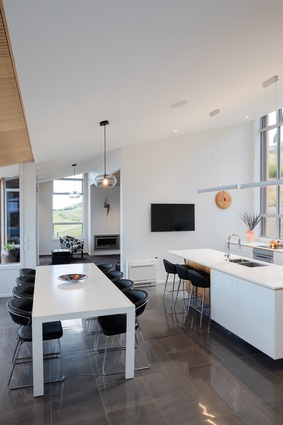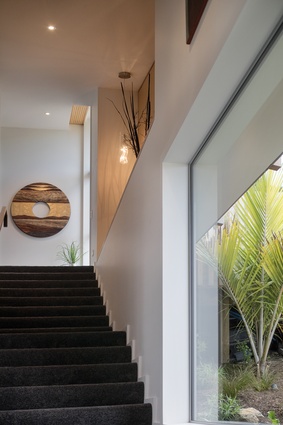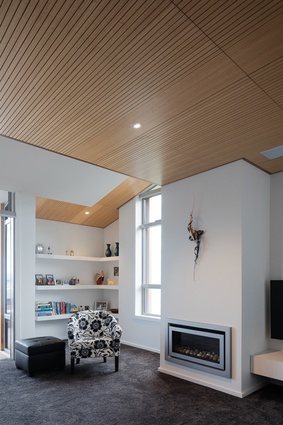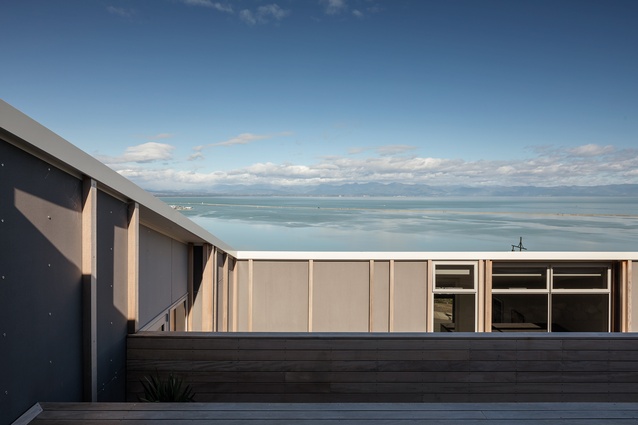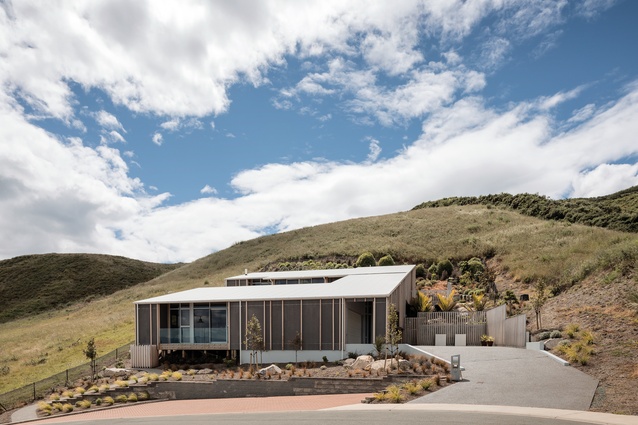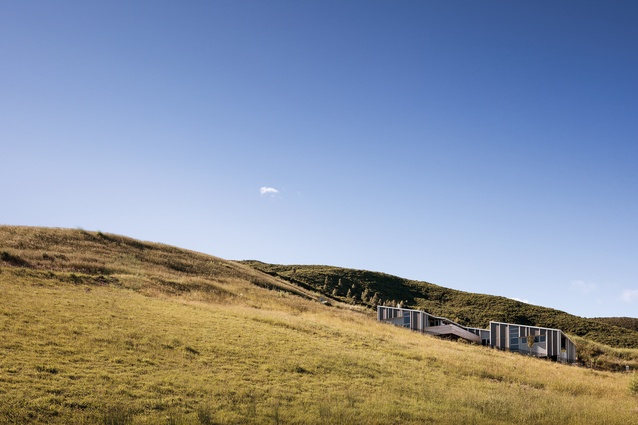Ocean outlook: One Storey House
This horseshoe-shaped house maximises the ocean views on a steep suburban plot in Nelson.
Along the coastal road from Nelson to Atawhai is a new suburb overlooking Nelson Haven, where a new kind of suburban house has been designed by a local architect for his children’s former teacher and her partner.
“The house is part of their love for each other; they got together and built a house,” explains architect Jeremy Smith of Nelson-based practice Irving Smith Architects.

At the moment, the setting appears quite rural because the adjacent site is yet to be built on, but below a beautiful view of the ocean is a newly built affluent suburb. “The owners bought the section at the very back of a subdivision on a steep hillside,” says Smith. “So our question was ‘how do we build a house where they don’t lose the view?’ because the people at the back normally lose the view.

Rather than build a tall, skinny house that complied with all the rules and placed the living up high at the front where they’re basically living in an apartment, we’ve used the lower bedrooms to essentially mask out everything that happens below. So when the other houses in the development arrive, you can’t see them; and they’ll be living in this private nest,” adds Smith.
This strategy also meant that the site didn’t need much excavation whereas, to build a tall house would have required digging a massive hole and, as Smith suggests, “a lot of money going into the ground”.
The plan of One Storey House is a U-shape on its side that opens up to the northern sun with a decked courtyard. The back wing is at the rear of the section, where the owners mostly live to maintain a high degree of privacy. The front wing accommodates the couple’s family when they come and stay and also acts as the front fence.
The two wings are linked by a wide corridor/staircase that travels up the side of the site and features a study/library/reading room off to its side, which overlooks the courtyard. “The owners are incredibly fit so they like the stairs,” quips Smith.
What’s particularly interesting is that it’s hard to tell where in the house the couple actually live. “Most people imagine that they live at the back without a view but, when you go up there, you realise that they have this fantastic view.”

But, while the plan is ususual, this is essentially a suburban house that utilises similar finishes to that of a spec-type house. “There’s a sense of normality,” explains Smith. “It hasn’t got a massive budget – it’s not dripping in cedar. It’s not trying to break a whole lot of new ground inside. We were trying to solve a massive problem in that they couldn’t get a spec house onto the site in a conventional way. At the same time, we were trying not to take it too far away from the dream home that they want it to be – their love nest.”
MATERIAL SELECTOR
Architect Jeremy Smith talks about the exterior cladding on One Storey House

What is the cladding? It’s a pre-finished fibre cement board, so it doesn’t require any maintenance. Bandsawn cedar battens cover the sheet joints vertically like a fence and they will go silvery over time. The battens had a job to do to waterproof the junctions in behind. We wanted to control the design – so it’s not just a pile of fibre cement!
This finish is a different approach. Yes. We were avoiding the monolithic finishes you normally see in the suburbs, so this cladding is breaking it down quite nicely. But we’re not a practice that ‘does finish’. For us, it’s much more important to get the fit right.
We could have spent more money, but it wouldn’t have changed how the house worked or the fit that we achieved for the client – the rest of it is kind of glory. Yes, we can keep going [with money] if you want us to but that’s not as important. We designed a house a few years ago that was built out of freezer panels just so it could be incredibly cheap and the owners could afford to build it.


